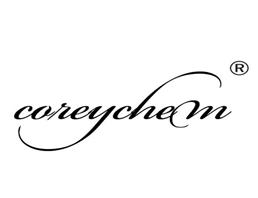
Sodium chlorite
| Price | $1 |
| Package | 1KG |
| Min. Order: | 1KG |
| Supply Ability: | 100kg |
| Update Time: | 2019-12-31 |
Product Details
| Product Name: Sodium chlorite | CAS No.: 7758-19-2 |
| Min. Order: 1KG | Purity: 99% |
| Supply Ability: 100kg | Release date: 2019/12/31 |
| name: Cassie367 |
▼
▲
Product Name:
Sodium chlorite
Synonyms:
Sodium chlorite ,75% [pure, unstabilized];Chlorine dioxide release mixture,Scentrex DTS 1.05 sachet, Sodium chlorite;Chlorine dioxide release mixture,Scentrex DTS 1.20 sachet, Sodium chlorite;Chlorine dioxide release mixture,Scentrex DTS 7.05 sachet, Sodium chlorite;Chlorine dioxide release mixture,Aseptrol WTS 7.05 sachet, Sodium chlorite;SodiuM chlorite, unstabilized, pure, 80% 500GR;Scentrex? DTS 1.05 sachet;Sodium chlorite puriss. p.a., 80% (RT)
CAS:
7758-19-2
MF:
ClNaO2
MW:
90.44
EINECS:
231-836-6
Product Categories:
Water treatment;Water Ttreatment Chemicals;Inorganic Salts;Synthetic Reagents;Analytical Reagents for General Use;Puriss p.a.;Q-S, Puriss p.a.;Essential Chemicals;Routine Reagents;Technical Grade
Mol File:
7758-19-2.mol
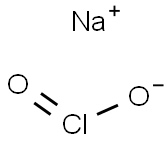
▼
▲
Sodium chlorite Chemical Properties
▼
▲
Melting point
190 °C (dec.)
density
2.5 g/cm3
form
Powder
color
White
Water Solubility
39 g/100 mL (17 ºC)
Sensitive
Hygroscopic
Merck
14,8600
Stability:
Stable. Incompatible with phosphorus, sulphur, zinc, ammonia, finely powdered metals, strong reducing agents, acids, organic materials.
CAS DataBase Reference
7758-19-2(CAS DataBase Reference)
EPA Substance Registry System
Sodium chlorite (7758-19-2)
▼
▲
Safety Information
▼
▲
Hazard Codes
O,Xn,T+,T,N
Risk Statements
8-22-24-32-34-9-26-25-14-36/37/38-21-50
Safety Statements
17-26-36/37/39-45-50A-38-36-61-28
RIDADR
UN 2813 4.3/PG 3
WGK Germany
2
RTECS
VZ4800000
TSCA
Yes
HazardClass
5.1
PackingGroup
II
HS Code
28289000
Hazardous Substances Data
7758-19-2(Hazardous Substances Data)
▼
▲
MSDS Information
▼
▲
Provider
Language
Sodium chlorite
English
SigmaAldrich
English
ACROS
English
ALFA
English
▼
▲
Sodium chlorite Usage And Synthesis
▼
▲
Description
Sodium chlorite (NaClO2) is a white crystalline solid, being able to accelerate the burning of organic substances. It is used in paper manufacture, water purification bleaching wood pulp, textile, fats, and oils, as a disinfectant and in many other fields. In the organic synthesis, it can be frequently used for the oxidation of aldehydes to carboxylic acids. It can also be used to convert Alkyl furans to the 4-oxo-2-alkenoic acids. Moreover, the acidified sodium chlorite (mixture of sodium chlorite with acid such as citric acid) can be used for the sanitation of the hard surfaces as well as rinsing of many foods. In Army, it can be used to combating contaminants such as benigh microbes and food pathogens. 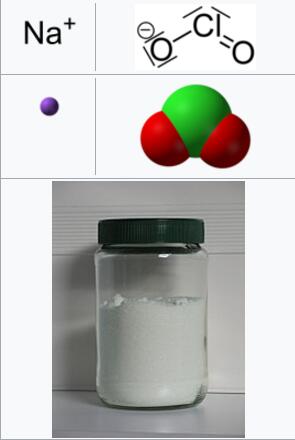

Uses
Sodium chlorite is a kind of efficient bleacher and bactericide. It is used for bleaching of pulp and various fibers such as cotton, linen, mulberry, reed, viscose fiber and so on. It can also bleach sugar, flour, starch, ointment, wax, oil, etc. It is also used for leather depilation, surface treatment of certain metals, water purification, sewage treatment, etc. It can also be used to purify trace amounts of nitric oxide in coke oven gas.
Production
The industrial production includes hydrogen peroxide method and electrolysis method.
For hydrogen peroxide method, we dissolve sodium chlorate in water to obtain the solution containing 250 g/L sodium chlorate, add chlorine dioxide generator and then adjust sulfuric acid into 4mol/L H2SO4. Add the gas mixture containing sulfur dioxide and air mixture and 4mol/L H2S04 into the chlorine dioxide generator to react, pass the chlorine dioxide gas generated through 3 bubbling absorption towers in series and obtain the solution containing 140 ~ 160 g/L NaClO2 after the reaction with 27.5% hydrogen peroxide and 18% ~ 20% liquid caustic soda. The clear liquor after the precipitation is the liquid sodium chlorite product. Control the concentration of sodium chlorite solution between 350g/L and 400g/L by evaporation and concentration and then obtain the finished product of solid sodium chlorite after cooling crystallization, filtration and drying. As follows:
2NaClO3+SO2+H2SO4→2C1O2+2NaHSO4
2C1O2+2NaOH+H2O2→2NaC1O2+2H2O+O2
For electrolysis method, we dissolve sodium chlorate in mixed acid composed by water and sulfuric acid with 260g sodium chlorate in per milliliter, add the mixed acid into chlorine dioxide generator to react with the mixed gas made up of sulfur dioxide and air (containing 8% ~ 10% sulfur dioxide), take 15% chlorine dioxide gas generated into the cathode chamber of electrolytic bath and add brine and distilled the water continuously in the anode chamber to carry out electrolysis to generate the sodium chlorite solution containing about 20% sodium chlorite. We can obtain the finished product of solid sodium chlorite after removing the trace of free chlorine dioxide and spray-drying at 130℃, or by evaporation concentration, cooling crystallization, filtration and drying. As follows:
2NaClO3+H2SO4+SO2→2ClO2+2NaHSO4
C1O2+e→C1O2-
2Cl-+2e→C12↑
Na++ClO2-→NaClO2
For hydrogen peroxide method, we dissolve sodium chlorate in water to obtain the solution containing 250 g/L sodium chlorate, add chlorine dioxide generator and then adjust sulfuric acid into 4mol/L H2SO4. Add the gas mixture containing sulfur dioxide and air mixture and 4mol/L H2S04 into the chlorine dioxide generator to react, pass the chlorine dioxide gas generated through 3 bubbling absorption towers in series and obtain the solution containing 140 ~ 160 g/L NaClO2 after the reaction with 27.5% hydrogen peroxide and 18% ~ 20% liquid caustic soda. The clear liquor after the precipitation is the liquid sodium chlorite product. Control the concentration of sodium chlorite solution between 350g/L and 400g/L by evaporation and concentration and then obtain the finished product of solid sodium chlorite after cooling crystallization, filtration and drying. As follows:
2NaClO3+SO2+H2SO4→2C1O2+2NaHSO4
2C1O2+2NaOH+H2O2→2NaC1O2+2H2O+O2
For electrolysis method, we dissolve sodium chlorate in mixed acid composed by water and sulfuric acid with 260g sodium chlorate in per milliliter, add the mixed acid into chlorine dioxide generator to react with the mixed gas made up of sulfur dioxide and air (containing 8% ~ 10% sulfur dioxide), take 15% chlorine dioxide gas generated into the cathode chamber of electrolytic bath and add brine and distilled the water continuously in the anode chamber to carry out electrolysis to generate the sodium chlorite solution containing about 20% sodium chlorite. We can obtain the finished product of solid sodium chlorite after removing the trace of free chlorine dioxide and spray-drying at 130℃, or by evaporation concentration, cooling crystallization, filtration and drying. As follows:
2NaClO3+H2SO4+SO2→2ClO2+2NaHSO4
C1O2+e→C1O2-
2Cl-+2e→C12↑
Na++ClO2-→NaClO2
Identification Test
The sodium test (IT-28) is positive.
With the addition of dilute hydrochloric acid in the 5% sample liquid, yellow gas should be produced and the liquid becomes yellow-brown.
The litmus red test paper turns blue after soaking up with 5% sample liquid infiltration.
With the addition of dilute hydrochloric acid in the 5% sample liquid, yellow gas should be produced and the liquid becomes yellow-brown.
The litmus red test paper turns blue after soaking up with 5% sample liquid infiltration.
Content Analysis
Weigh accurately 100 mg of the sample and dissolve it in water to make 250ml. Take 20ml of its solution in the iodine flask, add 12ml of 1mol/L of sulfuric acid and 25ml of potassium iodide test solution (TS-192), plug tightly at once, keep it in the dark for 5min and then add 0.5ml of starch test solution (TS-235). Use 0.1mol/L sodium thiosulfate solution to titrate and carry out the blank test at the same time. Per milliliter of 0.1mol/L sodium thiosulfate solution acts as 2.261mg sodium chlorite (NaClO2).
Toxicity
LD50166mg/kg (rats, per os).
Chlorine dioxide can be produced in use and staying in the air containing 45mg/kg chlorine dioxide for several hours can lead to death for a groundhog. It is irritating to respiratory mucous and eyes.
Chlorine dioxide can be produced in use and staying in the air containing 45mg/kg chlorine dioxide for several hours can lead to death for a groundhog. It is irritating to respiratory mucous and eyes.
References
https://pubchem.ncbi.nlm.nih.gov/compound/sodium_chlorite#section=Top
https://en.wikipedia.org/wiki/Sodium_chlorite
https://en.wikipedia.org/wiki/Sodium_chlorite
Chemical Properties
white flakes
Uses
For improving taste and odor of potable water (as an oxidizing agent); bleaching agent for textiles, paper pulp, edible and inedible oils, shellacs, var- nishes, waxes and straw products; oxidizing agent; reagent.
Definition
ChEBI: An inorganic sodium salt in which chlorite is the counterion.
Definition
A chlorate(III) salt; i.e. a salt of chloric(III) acid (chlorous acid).
General Description
A colorless liquid consisting of sodium chlorite dissolved in water. Corrosive to skin and/or metals.
Air & Water Reactions
Soluble in water.
Reactivity Profile
SODIUM CHLORITE SOLUTION is an oxidizing agent. Can react with acids to form spontaneously explosive chlorine dioxide gas (ClO2). Reacts with ammonia to produce ammonium chlorite, which is shock-sensitive. Finely divided metallic or organic substances in dry mixture with chlorites are highly flammable and may be ignited on friction (Lab. Gov. Chemist 1965). A mixture of organic matter and solid sodium chlorite can be extremely sensitive to heat, impact, or friction (Diox Process 1949). Sodium chlorite reacts very violently with organic materials containing divalent sulfur or with free sulfur (may ignite).
Hazard
Flammable, strong oxidizing agent, dan- gerous fire and moderate explosion risk. (Solution) Strong irritant to skin and tissue.
Health Hazard
TOXIC; inhalation, ingestion or skin contact with material may cause severe injury or death. Contact with molten substance may cause severe burns to skin and eyes. Avoid any skin contact. Effects of contact or inhalation may be delayed. Fire may produce irritating, corrosive and/or toxic gases. Runoff from fire control or dilution water may be corrosive and/or toxic and cause pollution.
Fire Hazard
Non-combustible, substance itself does not burn but may decompose upon heating to produce corrosive and/or toxic fumes. Some are oxidizers and may ignite combustibles (wood, paper, oil, clothing, etc.). Contact with metals may evolve flammable hydrogen gas. Containers may explode when heated.
Agricultural Uses
Chlorite is a group of greenish clay minerals of variable composition (similar to mica in structure), which crystallizes in the monoclinic system. The term chlorite is derived from 'chloros', the Greek word for green.
Chlorites are composed of complex silicates of aluminum, magnesium and iron in combination with water.
These are often called 2:2 type clays because they are similar to the unit lattice of vermiculite. But strictly speaking, they are 2:1:1 type clays. A layer of chlorite has 2 silicate tetrahedral units, one alumina octahedral unit and one magnesium octahedral sheet. It has a low cation exchange capacity. Chlorites are most commonly found in low-grade metamorphic rocks. They also occur as secondary minerals in igneous rocks as alteration products of pyroxenes, amphiboles and micas.
Chlorites are infrequent in soils and when present, make up a small fraction of clay minerals. Chlorites are primary minerals and form vermiculites and smectites. Chlorites do not swell on wetting.
Chlorites are composed of complex silicates of aluminum, magnesium and iron in combination with water.
These are often called 2:2 type clays because they are similar to the unit lattice of vermiculite. But strictly speaking, they are 2:1:1 type clays. A layer of chlorite has 2 silicate tetrahedral units, one alumina octahedral unit and one magnesium octahedral sheet. It has a low cation exchange capacity. Chlorites are most commonly found in low-grade metamorphic rocks. They also occur as secondary minerals in igneous rocks as alteration products of pyroxenes, amphiboles and micas.
Chlorites are infrequent in soils and when present, make up a small fraction of clay minerals. Chlorites are primary minerals and form vermiculites and smectites. Chlorites do not swell on wetting.
Safety Profile
Poison by ingestion. An experimental teratogen. Experimental reproductive effects. Questionable carcinogen with experimental carcinogenic data. Mutation data reported. May act as an irritant due to its oxidizing power. A powerful oxidzing agent; ignited by friction, heat, or shock. An explosive sensitive to impact or heating to 200'. Potentially explosive reaction with acids, oils, organic matter, oxahc acid + water, zinc. Violent reaction or iption with carbon (above 60'), ethylene glycol (at loo'), phosphorus (above SO0), sodum dithionate, sulfur-containing materials. Can react vigorously on contact with reducing materials. When heated to decomposition it emits highly toxic fumes of Cland NazO. Used as a bleachmg agent. See also CHLORITES.
Purification Methods
Crystallise the chlorite from hot water and store it in a cool place. It has also been crystallised from MeOH by counter-current extraction with liquid ammonia [Curti & Locchi Anal Chem 29 534 1957]. A major impurity is chloride ion which can be removed by recrystallisation from 0.001M NaOH. [Schmeisser in Handbook of Preparative Inorganic Chemistry (Ed. Brauer) Academic Press Vol I p 312 1963.]
▼
▲
▼
▲
Company Profile Introduction
Established in 2014,Career Henan Chemical Co. is a manufacturerspecializing in the sale of fine chemicals.
Mainly deals in the sales of:
Pharmaceutical intermediates
OLED intermediates:
Pharmaceutical intermediates;
OLED intermediates;
You may like
Recommended supplier
| Product name | Price | Suppliers | Update time | |
|---|---|---|---|---|
| $658.00/1ton |
VIP2Y
|
Hebei Dangtong Import and export Co LTD
|
2023-09-15 | |
| $60.00/1kg |
VIP2Y
|
Hebei Duling International Trade Co. LTD
|
2023-02-09 | |
| $0.00/25KG |
VIP4Y
|
Hebei Mojin Biotechnology Co., Ltd
|
2022-06-27 | |
| $10.00/1KG |
VIP3Y
|
Wuhan wingroup Pharmaceutical Co., Ltd
|
2022-03-17 | |
| $15.00/1KG |
Zhuozhou Wenxi import and Export Co., Ltd
|
2021-07-10 | ||
| $10.00/1KG |
Wuhan Monad Medicine Tech Co.,LTD
|
2021-04-16 | ||
| $1.00/1PCS |
VIP6Y
|
Hebei Guanlang Biotechnology Co., Ltd.
|
2020-12-09 | |
| $3.00/50KG |
VIP4Y
|
Hebei Yanxi Chemical Co., Ltd.
|
2020-08-20 | |
| $15.00/1KG |
Zhuozhou Wenxi import and Export Co., Ltd
|
2021-07-08 | ||
| $10.00/1KG |
Wuhan Monad Medicine Tech Co.,LTD
|
2020-12-24 |
- Since: 2014-12-17
- Address: Room 702, Floor 7, Building 10, National University Science Park, High-Tech Zone, Zhengzhou City, H
INQUIRY



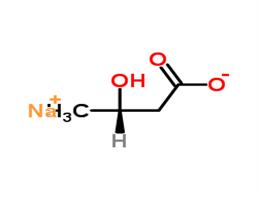
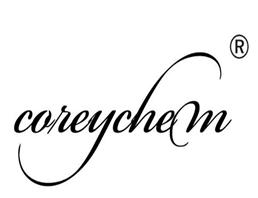

 China
China